

“Choosing between waterproof and non-waterproof LED strips hinges on your specific usage conditions. Waterproof LED strips offer enhanced protection against moisture, ideal for outdoor or wet areas. Non-waterproof LED strips are best suited for dry indoor environments, offering better heat dissipation and easier installation.”
When deciding between waterproof and non-waterproof LED strips, clearly understanding their differences is essential. I’ve worked with both types extensively and can share insights that will help you choose wisely.
Waterproof LED strips feature protective coatings, such as silicone sleeves or epoxy resin, designed to shield the LEDs from moisture, dust, and environmental factors. These strips have distinct IP ratings—typically IP65, IP67, or IP68—that indicate their level of protection and suitability for outdoor or wet conditions.
Non-waterproof LED strips lack protective coatings and are designed explicitly for indoor or dry environments. They offer easier handling, better heat dissipation, and simpler installation processes, making them ideal for detailed interior lighting projects and areas free from moisture exposure.
Here’s a quick tip from my experience: to determine if an LED strip is waterproof, always check the IP rating provided by the manufacturer—ratings IP65 or above generally indicate waterproof capabilities suitable for outdoor or damp locations.
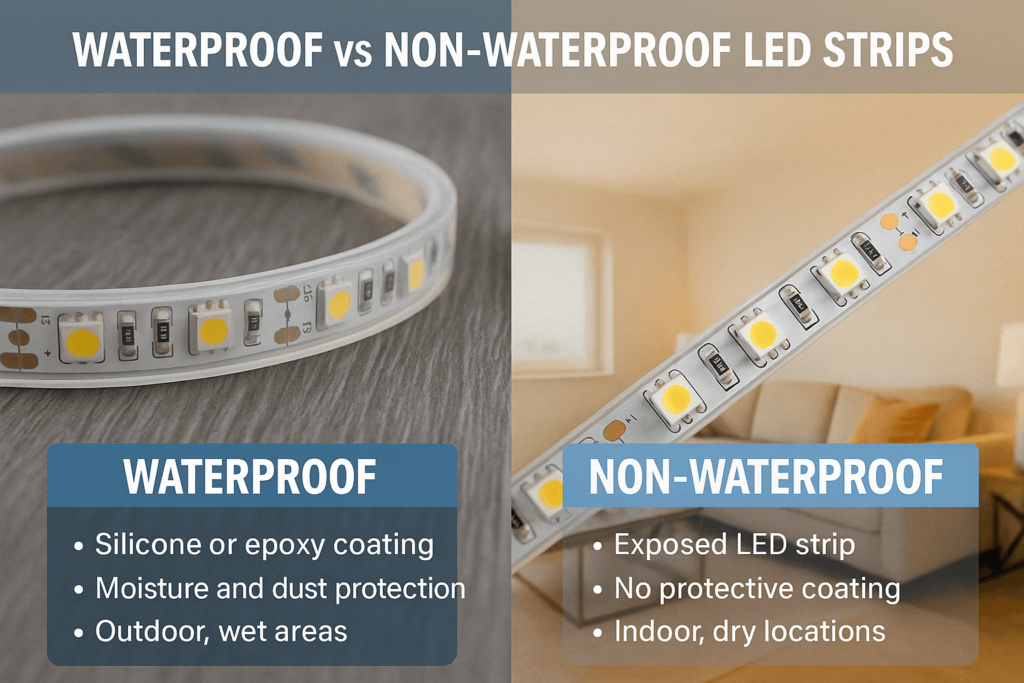
Having worked extensively with LED strip installations, I understand how important technical details are in choosing between waterproof and non-waterproof options. Let’s clearly break down the primary differences to help you make an informed decision.
Waterproof LED strips come with clearly defined IP ratings, indicating their resistance levels against water and dust:
Non-waterproof LED strips typically have ratings of IP20, offering no substantial protection from moisture or dust.
One crucial difference I’ve noticed through hands-on experience is how waterproofing affects LED strip performance, especially regarding heat dissipation:
If you’re wondering what happens if a non-waterproof LED strip gets wet: exposure to moisture can quickly lead to short-circuits, damage, and safety hazards. From my experience, always use waterproof strips in areas prone to moisture or outdoor conditions.

Based on my extensive experience in installing LED lighting, I’ve learned firsthand that safety is a critical factor when selecting LED strips. Clearly understanding the safety implications can save you from potential hazards and costly mistakes.
Waterproof LED strips are specifically designed for wet or damp conditions, offering critical protective layers. However, despite their protection, safety measures must always be observed:
Non-waterproof strips, while easier to handle and typically safer indoors, pose clear risks when exposed to moisture:
A common question I often encounter: “Can I put waterproof LED lights in my shower?” Absolutely—but ensure you choose strips rated IP65 or higher, and always have them professionally installed to ensure safety and reliability.
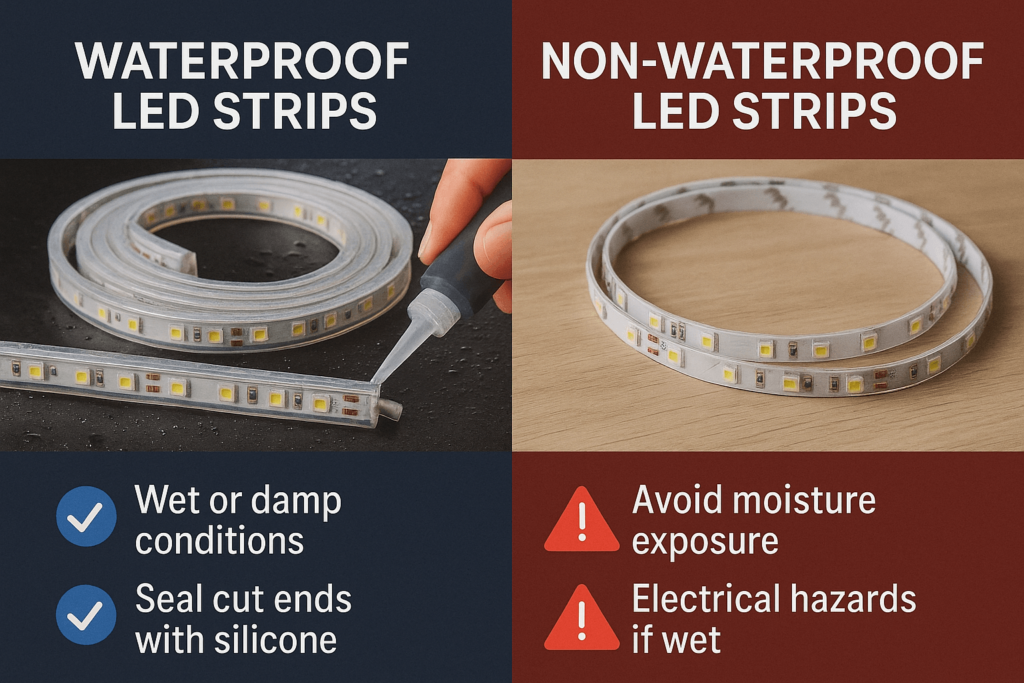
Having personally installed various types of LED strip lighting, I’ve found that clearly understanding the benefits and limitations of waterproof and non-waterproof LED strips can help you avoid common pitfalls and ensure you make the best choice for your specific project.
Advantages:
Disadvantages:
Advantages:
Disadvantages:
People often ask me, “Are waterproof LED strips better for home lighting than non-waterproof ones?” My experience tells me that waterproof strips are superior for moisture-prone areas, whereas non-waterproof strips are ideal for general indoor use, offering easier installation and better heat management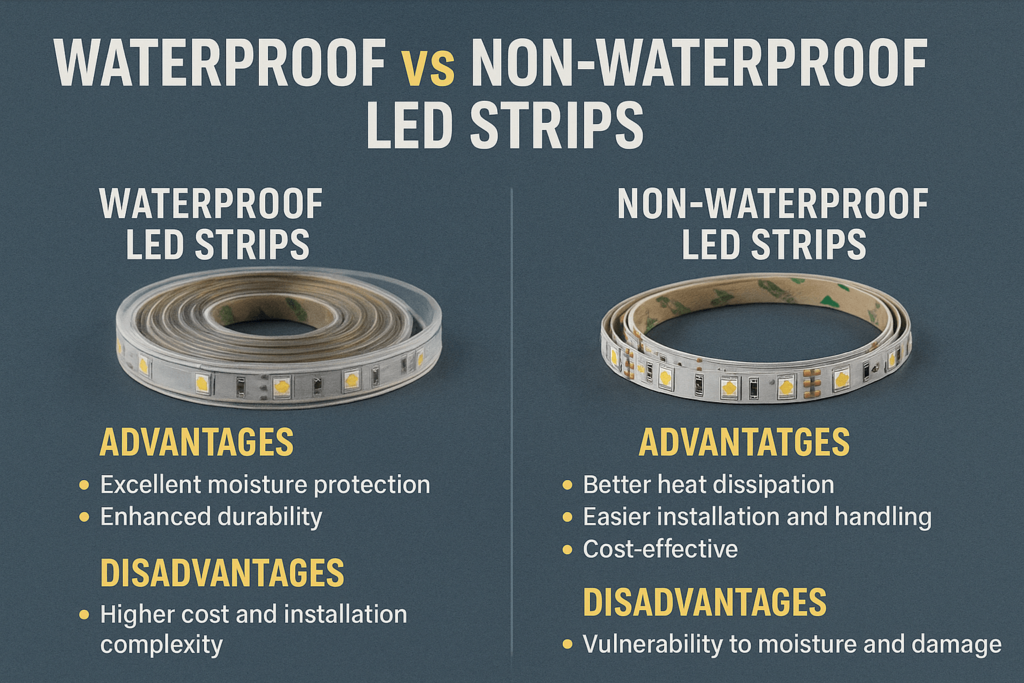
Drawing from my hands-on experience, I can clearly outline practical scenarios to help you choose between waterproof and non-waterproof LED strips. Understanding the ideal applications of each type is essential to get the most from your lighting investment.
Waterproof LED strips are clearly best suited for environments where moisture exposure is frequent or likely, such as:
From my installations, I’ve found that non-waterproof LED strips excel in controlled, dry environments such as:
Often, people wonder, “Can non-waterproof LED strips ever be used outdoors?” From my experience, the answer is clear: no. Always use waterproof LED strips for outdoor or moisture-prone installations to prevent electrical hazards and ensure longevity.
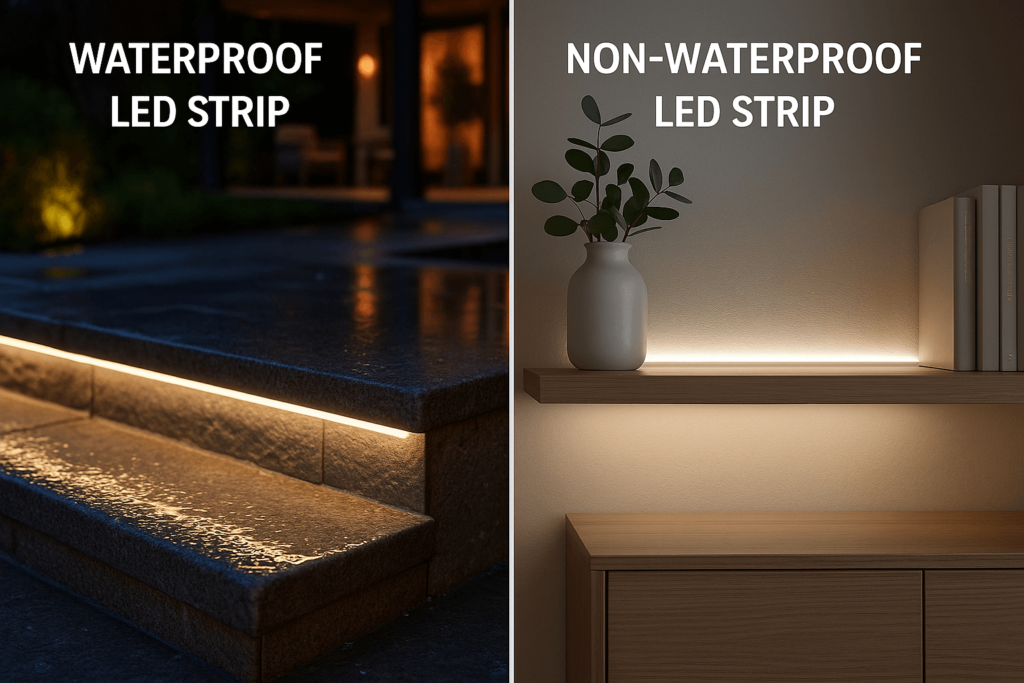
Having guided numerous lighting installations, I can share clear criteria to help you confidently decide whether waterproof or non-waterproof LED strips best suit your needs. Here’s a straightforward breakdown of the key decision-making factors and practical tips I’ve gathered over the years.
For further detailed insights, you might find this resource helpful:
LED IP Ratings Explained – Flexfire LEDs
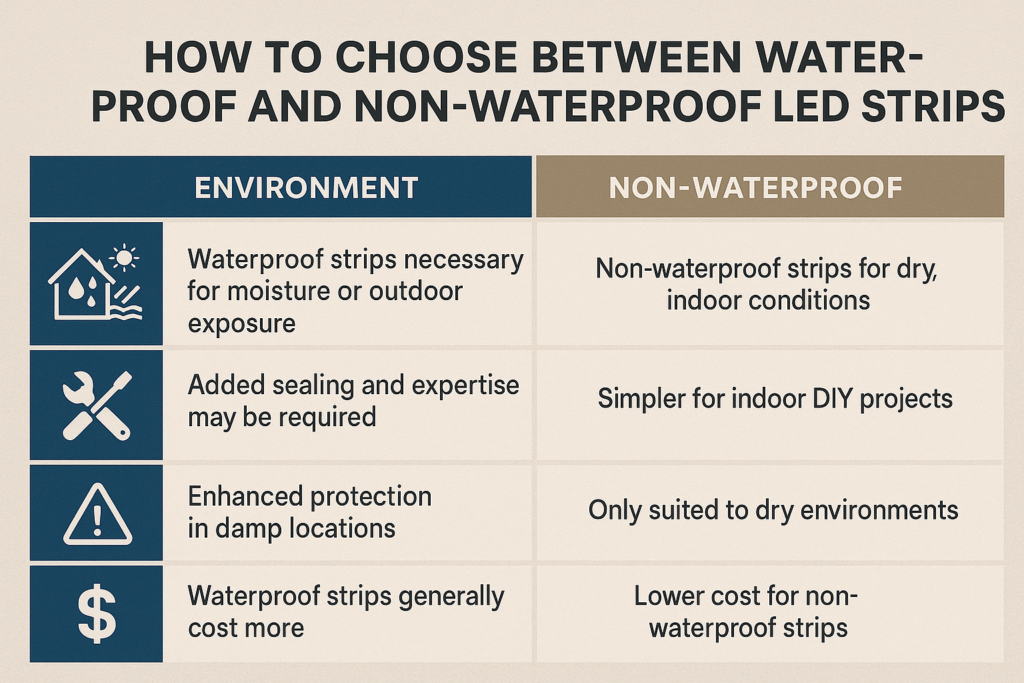
Drawing from my experience installing various LED strip lighting systems, I’d like to share straightforward, step-by-step instructions, essential maintenance tips, and practical troubleshooting advice to ensure your LED strips operate safely and effectively.
Waterproof LED Strips Installation:
Non-Waterproof LED Strips Installation:
Many people ask me about the common issues during installation. The main problems typically include poor adhesion, insufficient sealing of waterproof strips, and inadequate power supplies causing brightness inconsistency.
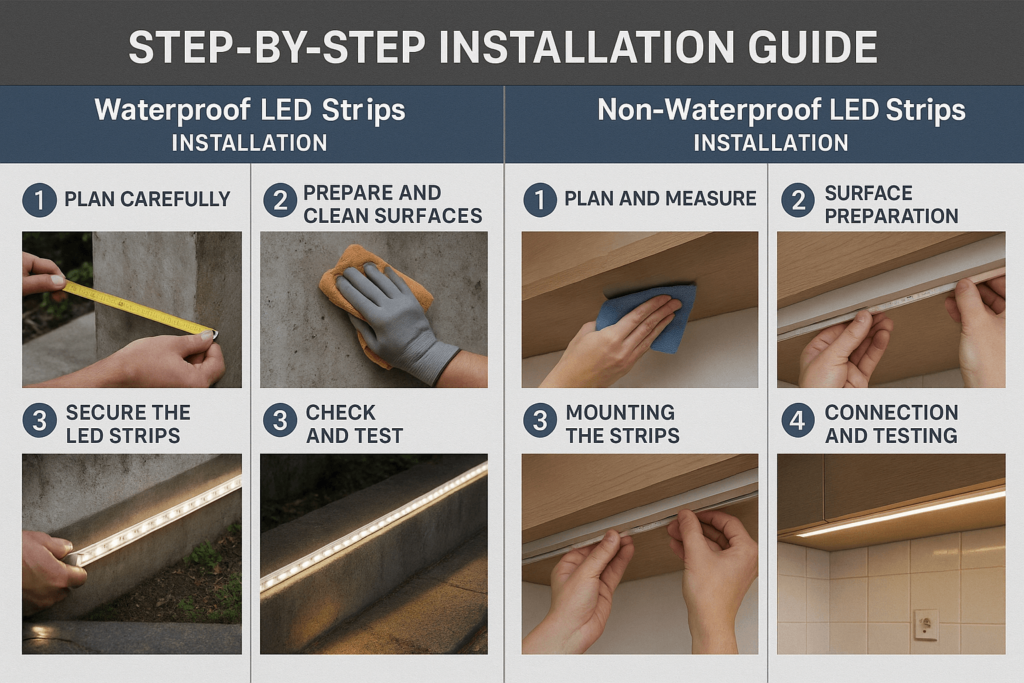
Below are clear and concise answers to some of the most common questions I’ve encountered about waterproof and non-waterproof LED strip lighting. These insights will help you confidently address practical concerns and make informed choices.
Absolutely. Waterproof LED strips rated IP65 or higher can safely be installed in showers, bathrooms, and other wet areas. Always ensure proper installation, professional sealing, and adherence to safety standards for optimal protection.
For outdoor LED lighting, IP65 or above is typically recommended. IP65 offers protection against rain and water jets, while IP67 or IP68 ratings clearly provide higher-level protection suitable for continuous exposure to severe weather or submersion.
Yes, non-waterproof LED strips are safe and ideal for dry indoor environments. Ensure they’re installed clearly away from moisture-prone areas, and they will provide excellent performance and ease of maintenance.
Choosing between waterproof and non-waterproof LED strips ultimately depends on your project’s specific needs. From my experience, waterproof LED strips offer clear advantages in moisture-prone or outdoor environments, delivering essential safety and reliability. On the other hand, non-waterproof strips clearly excel in dry indoor areas, offering easier installation, better heat dissipation, and cost-effectiveness.
I hope my insights have clearly guided you toward confidently selecting the best LED strip solution for your lighting needs.
Ready to explore further and find the perfect LED strips for your project?